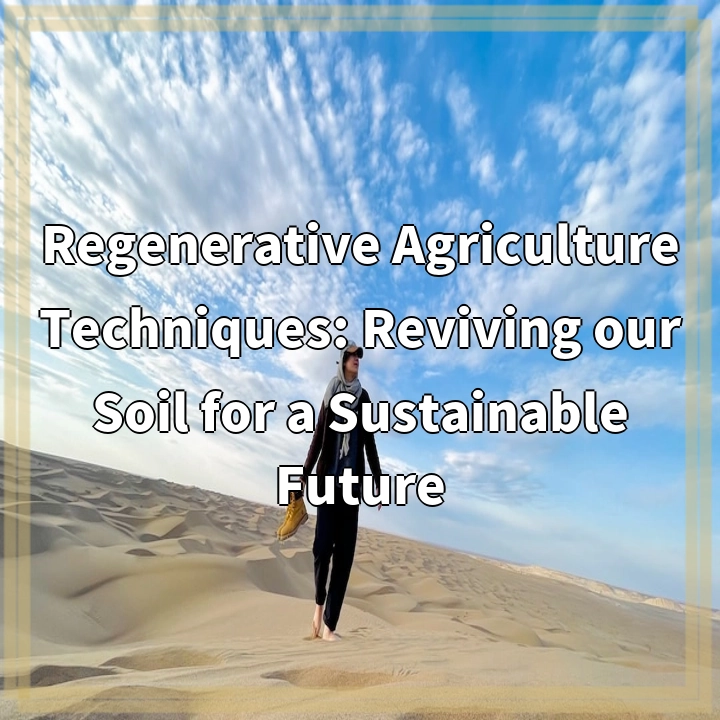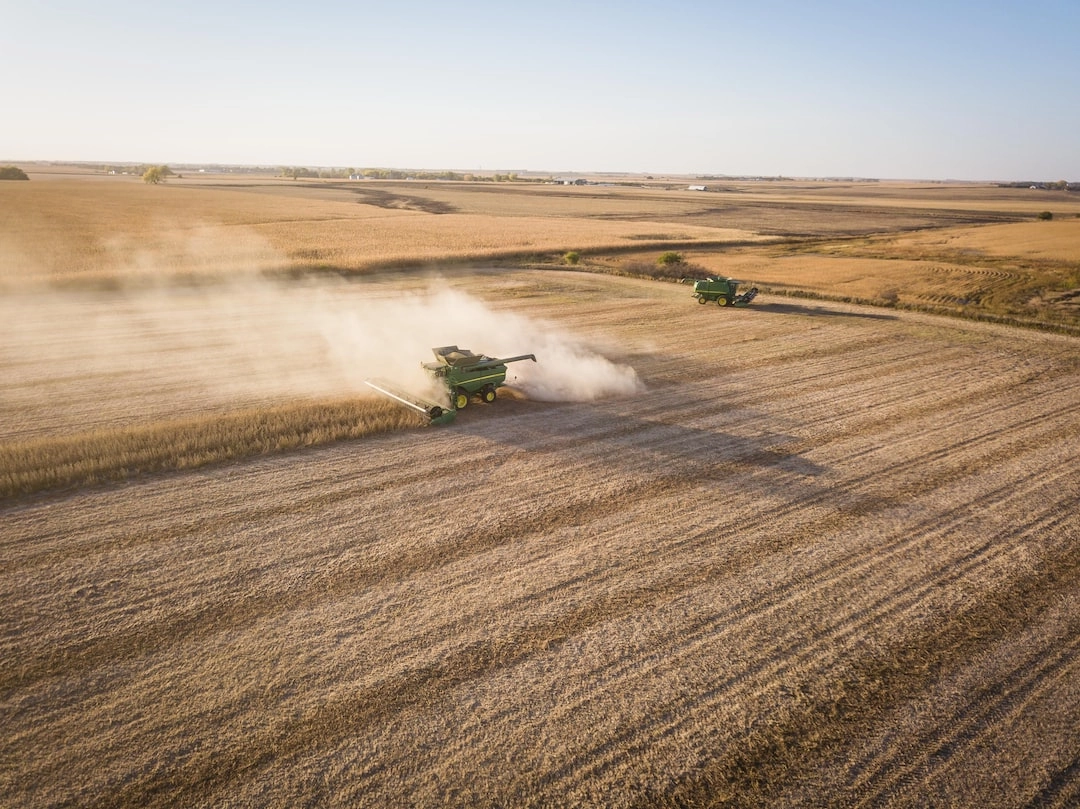
What it is:
Regenerative Agriculture Techniques: Reviving our Soil for a Sustainable Future
Regenerative Agriculture is a holistic approach to farming that focuses on improving soil health, restoring ecosystems, and promoting biodiversity while also ensuring long-term sustainability. Unlike conventional agriculture, which often depletes the soil and relies heavily on synthetic inputs, regenerative agriculture aims to work with nature rather than against it.
At its core, regenerative agriculture entails implementing a set of practices that foster soil regeneration. These practices include minimizing soil disturbance through reduced tillage, integrating cover crops to protect the soil from erosion and enhance organic matter, and diversifying crop rotations to improve nutrient cycling and break pest and disease cycles. In addition, regenerative farmers prioritize the use of natural fertilizers, such as compost and manure, and promote the integration of livestock to restore soil fertility and enhance grazing land health.
Real-World Problems:
Soil Degradation:
One of the primary challenges facing our agricultural systems today is soil degradation. Continuous use of conventional farming practices, such as excessive tilling, heavy chemical inputs, and monoculture crops, has led to the loss of topsoil, decreased soil organic matter, and reduced biodiversity. This degradation hinders the soil’s ability to hold water, sequester carbon, and provide essential nutrients for healthy plant growth.
Environmental Pollution:
Conventional agriculture heavily relies on synthetic pesticides, herbicides, and fertilizers, which can have a detrimental impact on the environment. These chemical inputs can pollute water bodies, contaminate groundwater, and harm beneficial insects, birds, and other wildlife. Additionally, the production and transportation of these inputs contribute to greenhouse gas emissions and air pollution, exacerbating climate change.
Loss of Biodiversity:
Intensive farming practices have led to the loss of biodiversity in agricultural landscapes. Monoculture crops and the use of chemical inputs disrupt natural ecosystems, causing a decline in pollinators, beneficial insects, and wildlife. The loss of biodiversity not only affects ecosystem health but also compromises the resilience and productivity of agricultural systems.
Climate Change:
The conventional agricultural system is a significant contributor to greenhouse gas emissions. From the production and application of synthetic inputs to the transportation and processing of agricultural products, each stage of the conventional food system has an environmental impact. These emissions, along with the destruction of carbon-rich soil through intensive agriculture, contribute to climate change and its associated consequences, such as more frequent extreme weather events and decreased agricultural productivity.
In conclusion, regenerative agriculture offers a promising solution to address many of the real-world problems associated with conventional farming. By prioritizing soil health, promoting biodiversity, and reducing environmental pollution, regenerative agriculture not only helps revive our soil but also fosters a more sustainable and resilient agricultural system for the future.

Solutions to Real-World Problems:
Solutions for Soil Degradation:
Regenerative agriculture offers solutions to combat soil degradation. By practicing reduced tillage, implementing cover crops, and diversifying crop rotations, farmers can enhance soil health and promote the restoration of soil organic matter. These practices increase water holding capacity, improve nutrient cycling, and create a favorable environment for beneficial soil organisms.
Environmental Pollution Mitigation:
Regenerative agriculture aims to minimize environmental pollution by reducing reliance on synthetic pesticides, herbicides, and fertilizers. Instead, natural inputs such as compost and manure are used to nourish the soil and promote plant health. By adopting these practices, farmers can safeguard water resources, protect biodiversity, and reduce carbon emissions associated with the production and transport of synthetic inputs.
Promoting Biodiversity:
Regenerative agriculture creates opportunities to restore biodiversity by moving away from monoculture crops and chemical-intensive practices. Through crop diversification, the integration of cover crops, and the preservation of natural habitats in and around farms, regenerative agriculture provides a favorable environment for pollinators, beneficial insects, and wildlife. This, in turn, supports a healthy ecosystem and enhances the resilience of agricultural systems.
Climate Change Mitigation:
Regenerative agriculture plays a critical role in mitigating climate change. By increasing soil organic matter through carbon sequestration, this practice helps remove carbon dioxide from the atmosphere and store it in the soil. Additionally, regenerative agriculture reduces greenhouse gas emissions by minimizing the use of synthetic inputs and promoting carbon-friendly farming techniques such as agroforestry and rotational grazing. These actions contribute to the overall reduction of agriculture’s carbon footprint.
In summary, regenerative agriculture offers practical and effective solutions to the real-world problems associated with conventional farming. By prioritizing soil health, minimizing environmental pollution, promoting biodiversity, and mitigating climate change, regenerative agriculture provides a pathway towards a more sustainable and resilient agricultural system for a sustainable future.















